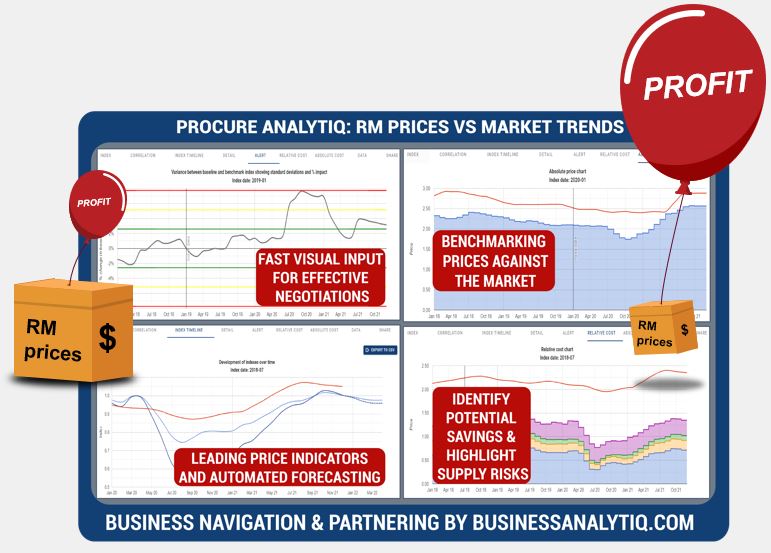Phosphate rock price April 2024 and outlook (see chart below)
- The chart below summarizes Phosphate rocl price trend per region, as well as the outlook. It takes a moment to load.
- North America:US$0.09/KG, unchanged
- Africa:US$0.13/KG, -7.1% down
- Northeast Asia:US$0.26/KG, -3.7% down
- South America:US$0.24/KG, unchanged
- India:US$0.16/KG, -5.9% down
Business Analytiq assumes no responsibility or liability for any errors or omissions in the content of this site. The information contained in this site is provided on an “as is” basis with no guarantees of completeness, accuracy, usefulness, or timeliness.
Phosphate rock price index
This post is a summary of the Phosphate rock price developments. The price developments of Phosphate rock are expressed in US$ prices converted FX rates applicable at the time when the price was valid. Phosphate rock price index developments are calculated from multiple separate sources of data to ensure statistical accuracy.
The outlook for Phosphate rock prices, on the second tab, is generated from different inputs including:
- Very recent price developments of immediate cost drivers of Phosphate rock prices
- Recent price developments of underlying feedstocks which drive the price of Phosphate rock
- Market futures for both cost drives and feedstocks ofPhosphate rock prices
- Adjustment of current supply/demand imbalances in the Phosphate rock market
- Longer term trends in likely demand conditions
Further information on the Phosphate rock price chart
What is rock phospate
Rock phosphate is a naturally occurring mineral deposit that is rich in phosphate minerals. It is formed from ancient marine sediments that have been slowly deposited and compressed over millions of years. Rock phosphate typically contains high levels of phosphorus, along with other minerals such as calcium and trace elements like selenium and strontium.
Rock phosphate is commonly used as a source of phosphorus in fertilizers and is often used to improve the fertility of agricultural soils. It can be used directly as a fertilizer, or it can be processed into various forms such as single superphosphate (SSP), triple superphosphate (TSP), or other phosphorus fertilizers.
Rock phosphate deposits are found in many parts of the world, with the largest reserves located in North Africa, the Middle East, and the United States. The quality of rock phosphate can vary depending on the specific location and geological conditions where it is found, and different types of rock phosphate may have varying levels of phosphorus content and other mineral impurities.
How is rock phosphate produced
Rock phosphate is a naturally occurring mineral deposit that is typically mined from underground deposits. The exact process of production can vary depending on the specific location and geological conditions of the deposit, but generally involves the following steps:
Exploration
Geologists identify potential rock phosphate deposits through geological surveys, aerial imaging, and other methods.
Mining
Once a deposit has been identified, it is typically mined using conventional open-pit or underground mining techniques. The ore is extracted from the ground using heavy equipment and transported to the processing plant.
Beneficiation
The mined rock phosphate ore is then processed through a beneficiation process to separate the phosphate mineral from other minerals and impurities. This can involve various methods such as washing, flotation, or magnetic separation.
Production of phosphoric acid
The purified phosphate ore is then used to produce phosphoric acid, which is a key ingredient in the production of fertilizers. This is typically done through a process called wet acid digestion, which involves reacting the phosphate rock with sulfuric acid.
Production of phosphate fertilizers
The resulting phosphoric acid is then used to produce a variety of phosphate fertilizers, such as single superphosphate (SSP), triple superphosphate (TSP), or diammonium phosphate (DAP).
The process of producing rock phosphate can be resource-intensive and energy-consuming, and can also generate waste materials and byproducts that need to be managed appropriately. Sustainable mining and processing practices are increasingly being adopted in the industry to reduce the environmental impact of rock phosphate production.
How big is the rock phosphate market
The global rock phosphate market is a significant part of the overall phosphate fertilizer industry. The market size of rock phosphate is influenced by a number of factors, including supply and demand dynamics, global economic conditions, and agricultural trends.
According to a report by Market Insights Reports, the global rock phosphate market size was valued at USD 3.8 billion in 2020 and is expected to reach USD 4.6 billion by 2027, with a compound annual growth rate (CAGR) of 2.7% from 2021 to 2027. The report cites increasing demand for food due to population growth, along with the need for sustainable agriculture practices as key drivers of growth in the rock phosphate market.
Overall, the global rock phosphate market is expected to continue to grow in the coming years, driven by the need for food production and the increasing adoption of sustainable agricultural practices.
According to https://oec.world/ :
Calcium Phosphates are the world’s 613th most traded product.
In 2020, the top exporters of Calcium Phosphates were Morocco ($1.17B), Jordan ($483M), Russia ($325M), Egypt ($251M), and Peru ($197M).
In 2020, the top importers of Calcium Phosphates were India ($840M), Indonesia ($291M), Belgium ($185M), Lithuania ($164M), and United States ($153M).
Which countries produce the most rock phosphate
The global production of rock phosphate is dominated by a few countries, with the top producers accounting for the majority of the world’s supply. According to the United States Geological Survey (USGS), the top producers of rock phosphate in 2020 were:
- Morocco: 27.8 million metric tons
- China: 9.5 million metric tons
- Russia: 7.5 million metric tons
- Jordan: 5.5 million metric tons
- Tunisia: 3.5 million metric tons
Other significant producers of rock phosphate include the United States, Egypt, Brazil, and Peru.
Morocco is by far the largest producer of rock phosphate in the world, accounting for nearly 75% of global production. The country’s phosphate reserves are primarily located in the Western Sahara region, and it is the leading exporter of phosphate rock to countries around the world. China is the second-largest producer of rock phosphate, with most of its production being used for domestic consumption.
The production of rock phosphate is influenced by a variety of factors, including global demand for fertilizers, market prices, and the availability of resources and infrastructure for mining and processing. The top producers of rock phosphate are expected to continue to dominate the market in the coming years, with growing demand for food and increasing adoption of sustainable agricultural practices driving the need for phosphate fertilizers.
Further reading
Business Analytiq
BE THE FIRST TO SEE RISK AND OPPORTUNITY!
BusinessAnalytiq provides unlimited market trend data and an online tools to track market developments, key benchmarks & leading indicators.
BusinessAnalytiq leads to price visibility, better negotiations, easier budgeting and forecasting, lower raw material prices, and improved better internal and external communication. BusinessAnalytiq will decrease risk and higher profit.

Where does the data come from?
- The source of the data are exclusively public non-confidential sources. We have no access to primary data
- This the index trend of the price trend of the "product category" in general, and not a single specification of the product in particular
- The data is a combination of contract and spot pricing
- Our algorithms are set up to eliminate significant product mix impact on the reported price
- We combine public publications, import/export records, trading prices, company announcements, magazine articles, tweets, and other sources of ad-hoc public information.
- The chart shows the our best approximation of the market trend based on our algorithm interpretation of the signals
- For most indexes we have multiple sources and we focus on using statistically-correlated sources
- As a function of our automation, it is likely that recent trends will be adjusted as we discover more information. So, for example, the price trend for February 2024 will be first calculated in February 2024 and adjusted in March, April and May 2024.
- We will update the data trend as more information becomes available, and this means that recent trends will always be adjusted as we get more data available
- The algorithm will regularly revise our understanding of market trends, and indicated market trends may change
- The data is presented in US$. The UOM of measure is shown in the Index list table
- Our automated software and we do our best to create an accurate representation of the trend
Where does the data NOT come from?
- We do not purchase data from any other source and republish it.
- We will not purchase data from any other source and republish it
- We do not extrapolate trends, even for the forecast. We look for other market signals and leading indicators
What data should our company use?
- If you are making decisions driving significant share of profit, we always recommend that you buy data from the companies who invest in direct primary market access such as ICIS, amongst many others
- Our data, at best, represents an estimate of the market trend based on public information
- We have no direct access to the market, and we do not interview suppliers and customers
- Our automated analysis tools in the online software are set up to combine our data with other sources of data
- We do not recommend that you use our data for direct price mechanisms, as we may change and improve the data trends over time, including historical data
What does the quality indication in the main menu mean?
- Quality level A: Data is from a reliable and confirmed source
- Quality level B: Data is from multiple credible sources and there are no major statistical inconsistencies between them
- Quality level C: Data is from multiple credible sources and there are some statistical inconsistencies between them
- Quality level D: Data is from a single credible source, but we cannot verify the data
- Quality level E: Data is either:
- From a single source, which we consider reliable, but we cannot verify the data.
- From 2 or more sources which have some periods of contradicting trends.
- Quality level F: Data is from a single source which we consider indicatively correct, but the data is anecdotal and we cannot verify the data.
What are the disclaimers?
- We assume no responsibility or liability for any errors or omissions in the content of this site.
- The information is provided on an “as is” basis with no guarantee of completeness, accuracy, usefulness, fitness for purpose or timeliness.
- By their nature, outlooks are always uncertain
How often do we update the data?
- We aim to update the data series on the 9th and 24th of each month (but we do not always make it for each chart)
- The data for the current month and recent history are fine-tuned over time.
What are we doing to improve the data?
- We are continually improving our data collection and processing methods
- Pricing data will be updated from time to time as we improve the accuracy
- We are reviewing all data sources in the first half of 2024.
- There will be continuous fine-tuning of the trend and forecast algorithm as part of that.
- The key focus in 2024 is to add many additional indexes
How can i give feedback on the data or request for new indexes
- Feel free to contact us if you have a specific request. You can reach us via the Contact us page

